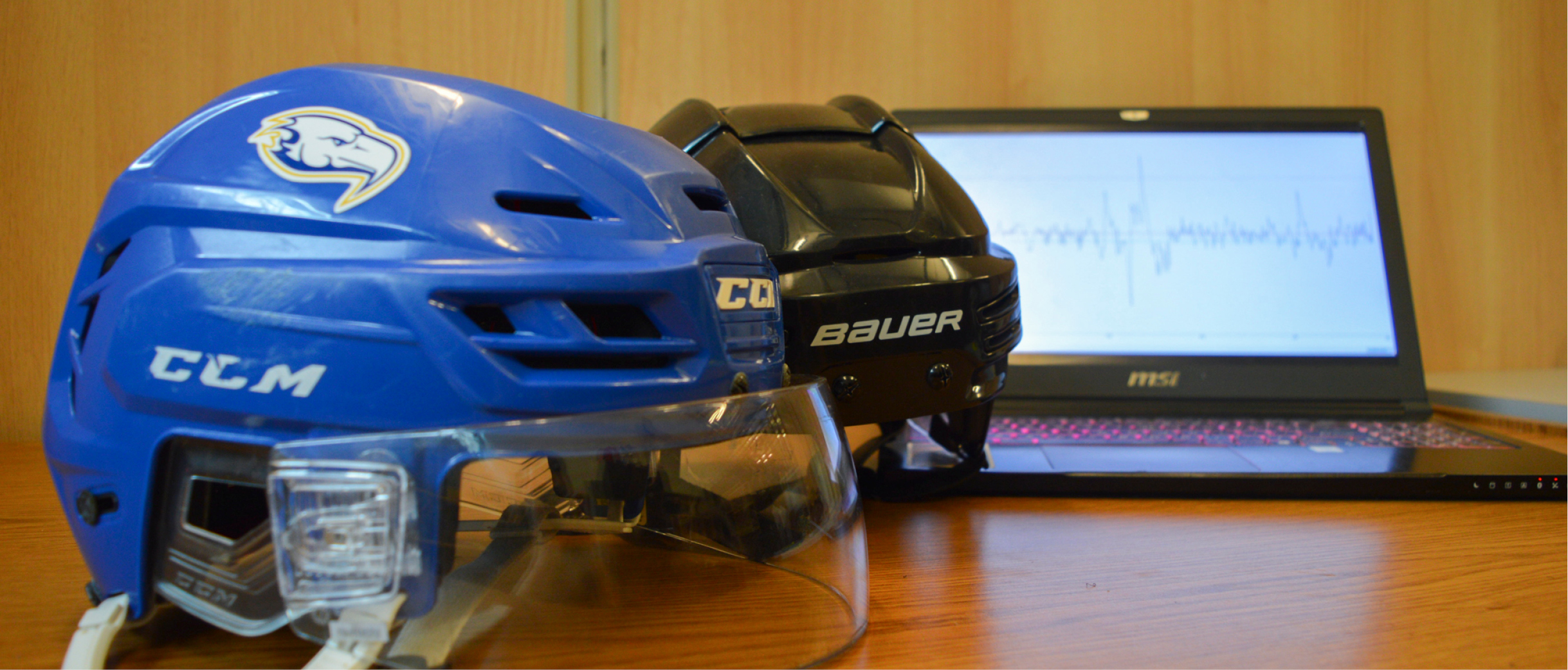
Here we explore current research by Mechanical Engineering Assistant Professor Lyndia Wu, “Investigating Brain Trauma Accumulation from Subconcussive Head Impacts and Differences between Male and Female Ice Hockey Players”
Two projects by UBC Mechanical Engineering faculty members were among the first to receive funding through the Government of Canada’s New Frontiers in Research Fund (NFLF), an initiative recently launched to support and encourage “high-risk, high-reward, interdisciplinary and international research.” The fund, which will invest $275 million over the next 5 years and 65 million ongoing, provides up to $250,000 in funding per project, to offset the challenges early-career researchers often face securing funding for innovative, “fast-breaking” but consequently risky research endeavors. Both projects will receive the maximum $250,000 in funding over the next two years.
Below, we delve into Dr. Lyndia Wu’s innovative research into subconcussive head impacts:
Dr. Lyndia Wu’s project, “Investigating Brain Trauma Accumulation from Subconcussive Head Impacts and Differences between Male and Female Ice Hockey Players,” developed out of her concussion biomechanics research. Wu’s PhD work at Stanford University focused on developing motion sensors to measure head acceleration parameters during impacts in sports, and then correlating that information with whether or not the impacted players sustained concussions. In doing that research, however, Wu realized that there were limitations with correlating impact inputs with “binary concussion/no-concussion outcomes”. First, the diagnosis of concussion in sports relies heavily on self-reporting, and players may not always report their injuries. Second, among those who did get diagnosed, there were “variations” in both type and severity of symptoms, complicating the binary injury classification. As such, Wu is currently leading her own research group at UBC to address this limitation in brain injury biomechanics research.
“Even if a person doesn’t have a clinically-diagnosed concussion,” Wu explained, “it doesn’t necessarily mean nothing happened. As we know, sometimes milder impacts can cause a shorter lasting and milder response, but if there’s accumulation of a lot of small impacts, there might still be longer term effects on the brain.” Wu called these milder impacts “subconcussive events” and noted that they are “under-studied at this point, compared to all the studies involving clinically-diagnosed concussions, because [they are] inherently difficult to quantify.”
It was from these observations that Wu’s new project was conceived, and the investigation has been made possible by the New Frontiers in Research Funding. The new project will still use the aforementioned motion sensors to measure the accelerations of the head during impacts, but the funding will allow her team to also develop a “brain response sensor” that can quantify the resulting subconcussive events. “So instead of only measuring the head impact input,” Wu explained, “we’re also trying to measure the output from the head impacts in real time, continuously on the field, which has not really been done before. So, this is very high risk, as is encouraged by the New Frontiers in Research Fund, because we don’t exactly know what to expect in terms of these immediate brain responses to head impacts that are happening on the field.”
Wu and her team are working with two co-investigators: electroencephalogram (EEG) concussion measurement expert Naznin Virji-Babul and neuropsychologist Noah Silverberg to develop this brain response sensor. While it’s still in the early stages, Wu mentioned that they are considering a fabric-based, wearable EEG device that could be worn underneath the helmet. Because EEG sensors measure the brain’s electrical activity through the scalp, this type of sensor would theoretically allow her team to see and measure the disturbances that happen in the brain after every impact on the field, and to further look at the cumulative effects of multiple impacts over time. It would also allow them to do sex- and gender-based analyses, and examine why female players tend to have worse brain injury outcomes compared to male players. Wu hopes the data from her wearable sensor will shed some light on whether these differences are the result of biological factors, such as females having weaker necks leading to higher head accelerations, or sociopsychological factors, such as males being conditioned to act “strong”.
The results of Wu’s research could have significant implications for the sports industry. Further understanding the sex and gender differences might lead to “different concussion management strategies for male and female players”. But her results might also lead to regulations around the impact exposure a player is allowed to endure. As Wu put it:
If we know what each head impact is doing to the brain during these sports activities, and we find an input/output relationship in terms of when the brain might have sustained irreversible or longer-term changes, we might be able to put a limit on the exposure level and say ‘okay, perhaps this number of impacts with this frequency is the limit that a player should sustain within a single season, because beyond this limit we’re seeing some longer lasting changes that would be harder to mitigate.’ Our brain recovers pretty fast and has plasticity, so we’re not saying that we should necessarily ban contact sports or that nobody should be sustaining head impacts, but maybe there should be a limit on how many each player should sustain.
Because Wu is venturing into virtually uncharted research territory—attempting to measure brain responses in the wild, with a type of sensor that is typically used on stationary participants in a lab rather than on people playing sports—such research would likely not be possible without the New Frontiers in Research fund. “Having funding mechanisms like this, where non-traditional and collaborative interdisciplinary work is encouraged, is pretty great,” Wu said, “because it enables novel research that might not be fundable by any of the traditional mechanisms.”